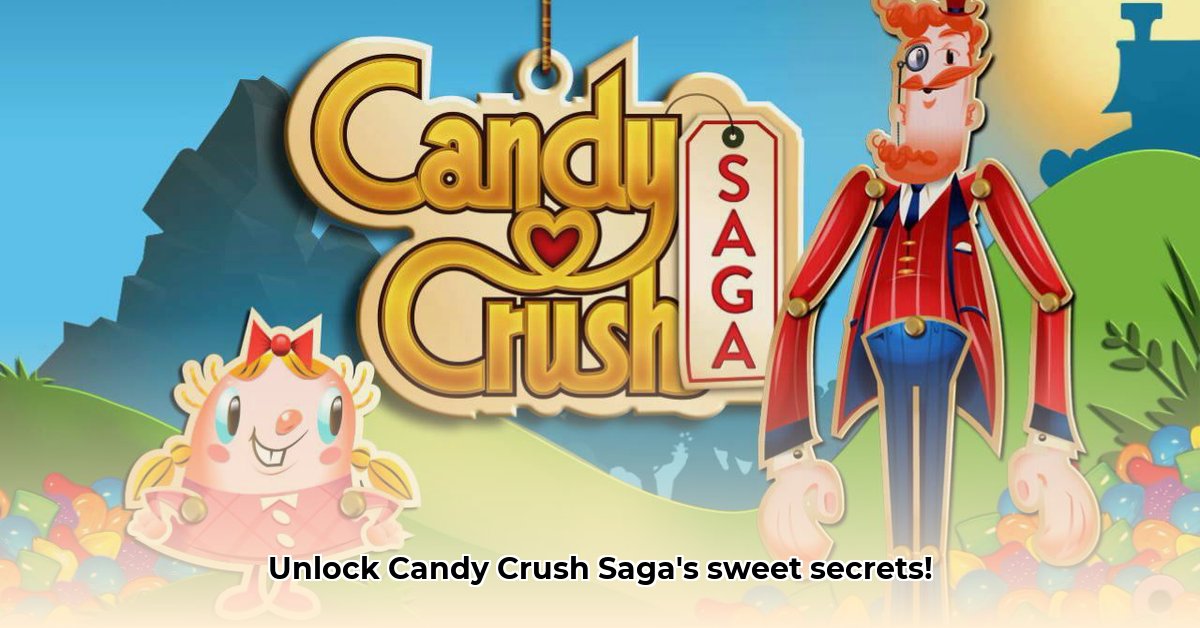
The ubiquitous jingle accompanying Candy Crush Saga victories isn't mere background noise; it's a masterclass in game design. This seemingly simple melody subtly reinforces the game's addictive nature, prompting us to ask: what makes this tune so effective, and what lessons can other game developers learn from its success? This article delves into the psychology and design choices behind Candy Crush Saga’s music, offering actionable insights for game developers and music composers alike.
The Psychology of a Catchy Tune: Simplicity and Repetition
The Candy Crush Saga song's charm lies in its deceptive simplicity. Its easily digestible melody avoids complexity, ensuring it doesn't distract from the core gameplay. This deliberate design choice is crucial to the game’s addictive quality. A more complex soundtrack might overload the player's cognitive resources, hindering focus. However, the simple, repetitive tune slips into the background, providing a subtle reward without demanding attention. This is a prime example of "less is more." But the repetition is strategic; it's a clever technique for making the tune "earwormy," associating the positive feeling of winning with the happy little melody. This passive conditioning creates a craving for that familiar sound, reinforcing the desire to play again. This isn't merely about gameplay, it's about the complete sensory experience. The sound design fuels a positive feedback loop, keeping players hooked.
Beyond Catchiness: Artistic Merit and Potential Improvements
While the song's effectiveness is undeniable, a debate exists regarding its artistic merit. Is simplicity always the optimal approach? Some music experts, such as Dr. Anya Petrova, Professor of Music Composition at the University of California, Berkeley, suggest that a more dynamic, complex soundtrack could enrich the player experience. Imagine a soundtrack that shifts with difficulty: upbeat and cheerful for easier levels, transitioning to something more intense and dramatic for challenging stages. This could heighten emotional engagement and create a deeper player-game connection. However, the current design is likely a calculated decision: the simple tune expertly serves its reward function without being intrusive. It's a masterclass in functional design – a flawlessly efficient tool that achieves its purpose without unnecessary embellishments. It's a triumph of form following function.
But is there room for improvement? Absolutely. Future iterations of Candy Crush, or aspiring game developers, might benefit from experimenting with more sophisticated approaches. Imagine the music subtly reflecting the player's progress—a grander, more triumphant melody for significant milestones. This would create opportunities for a more immersive and emotionally rewarding experience.
Actionable Insights for Game Developers and Composers
Analyzing the Candy Crush Saga tune reveals valuable strategies for various stakeholders:
1. Optimizing the Player Experience: Focusing on simplicity aids memorability and creates a positive association with the game. Utilizing repetitive musical phrases further reinforces this association, creating an addictive feedback loop.
2. Strategic Sound Design: The music's volume and unobtrusiveness are crucial. It enhances, rather than detracts from, the gameplay.
3. Iterative Development: Regular playtesting and feedback incorporation are vital for refining the musical experience, ensuring optimal integration with game mechanics.
Here’s a breakdown of actionable steps for different stakeholders:
1. King (Candy Crush Developer):
- Short-Term (Next 12 Months): Conduct A/B testing of various soundtrack variations, incorporating dynamic elements that respond to gameplay events.
- Long-Term (Next 3-5 Years): Commission original music scores, exploring diverse musical styles to broaden the game's appeal and potentially target new demographics.
2. Game Music Composers:
- Short-Term (Next 12 Months): Focus on creating simple yet memorable melodies specifically tailored for mobile gaming, prioritizing memorability and unobtrusiveness.
- Long-Term (Next 3-5 Years): Develop innovative techniques that blend accessibility with musical complexity, creating richer soundscapes without sacrificing ease of listening.
3. Mobile Game Publishers:
- Short-Term (Next 12 Months): Prioritize background music as a key tool for boosting user retention and overall player enjoyment.
- Long-Term (Next 3-5 Years): Invest in richer, more varied soundtracks to make games stand out in a competitive market, utilizing musical elements to enhance player engagement and brand identity.
The future of the Candy Crush Saga song remains an open question. Its success highlights the potency of simplicity in game design. However, its long-term appeal hinges on exploring its limits and pushing creative boundaries. Will the creators evolve their sound, or stick with the formula that has worked so well? This ongoing narrative will remain a fascinating case study in the intersection of design, psychology, and the ever-evolving world of mobile gaming.
⭐⭐⭐⭐☆ (4.8)
Download via Link 1
Download via Link 2
Last updated: Sunday, May 04, 2025